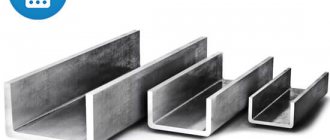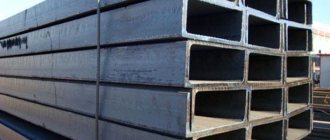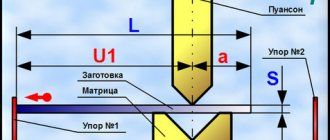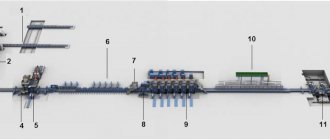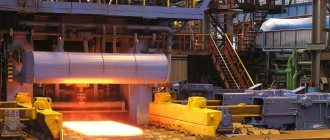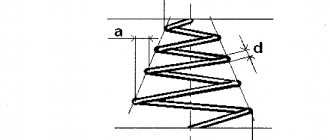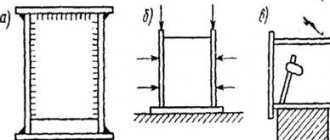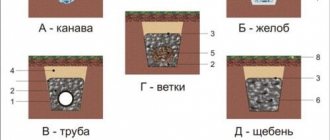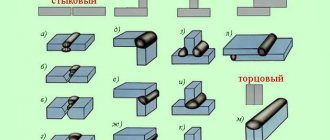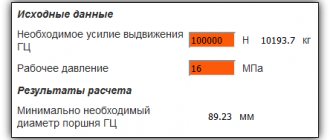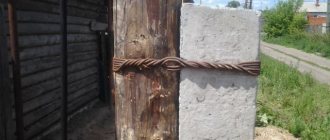A channel is a very popular product made of metal today. Its main distinguishing property is its U-shaped cross-section. The thickness of the finished product can be from 0.4 to 1.5 cm, and the height of the walls can be 5-40 cm.
Thin flange products are manufactured by processing flexible strip using special profile mills. Channels made from non-ferrous metals are obtained after processing the workpiece by pressing and extrusion, and steel channels are obtained using the technology of hot rolling of a metal billet on section mills.
What load can the channel withstand?
A channel is a rolled metal product that is actively used in construction. Moreover, it is quite difficult (almost impossible) to determine a specific area of construction. After all, the channel is used in the construction of almost any structure. However, the channel is made in various configurations from various alloys. This means that the load-bearing capacity of channel variations is not the same.
Buying a channel in Rostov will not be too difficult. You just need to clearly understand the characteristics of the channel before purchasing. You will learn how to calculate the load-bearing capacities of structural metal products from the publication below.
Perception of mechanical loads
The main task of the channel is precisely the perception and distribution of mechanical loads in building structures of various types. In other words, the channel will bend under load in any case.
However, there is an acceptable bend and a critical one. When the channel bends critically, its plastic deformation begins, and then the destruction of the product in principle.
The bending of a channel is directly affected by its geometric size.
The following are the characteristics of structural metal products, which are, in principle, used to perform load-bearing capacity calculations:
- standard load;
- channel type (shelf configuration, special purpose, lightweight, etc.);
- channel span length;
- the number of channels laid next to each other;
- elastic modulus (this characteristic naturally applies to steel);
- standard size with maximum vertical deflection.
The calculation is carried out mathematically. Sopromat offers several dependencies that allow you to determine with a high degree of accuracy the load-bearing characteristics of a channel (regardless of the type and configuration).
Maximum permissible deflection: the most important characteristic of a channel
When choosing a structural material and approving it for use in construction, various calculation data are used: minimum moment of resistance, bending moment, normal stress, etc.
However, the most important characteristic is the maximum permissible deflection. It is calculated as follows: the coefficient 5/384 is multiplied by the fraction. The numerator of the fraction contains the product of the design load and ¼ of the length of the channel span. The denominator is the product of the moment of inertia and the longitudinal elasticity index of the material from which the channel is made (its modulus).
The results obtained are a comprehensive calculation that allows you to find out whether the channel is really suitable for use in a particular part of the structure.
Numbers, letters and GOSTs
According to the production method, the channel can be bent or hot-rolled. It is easy to distinguish them even for a non-specialist - a hot-rolled channel has a clearly defined edge, while a bent channel it will be somewhat rounded. Other features of various types of channel are determined by their markings.
In particular, the letters A, B and C in relation to batches of hot-rolled channels will indicate that the rolling was carried out with high (A), increased (B) or normal accuracy (C).
The channel number indicates the height of its section, expressed in centimeters.
The width of the profile corresponds to the width of the shelf and can range from 32 to 115 mm. The marking of a channel, for example 10P, reflects its height and type of profile. The height of the channel section is generally the main parameter in its marking. The channel number is its height in centimeters, and the letters adjacent to it indicate that the channel cross-section can be:
1) with a slope of edges (series U and C), where U is the slope, and C or Sb are special series. 2) with parallel edges (P, E and L series), where E means economical series, and L means light. Letters C (for example - 18С, 20С, etc.) can be found in products intended for the automotive industry or for the construction of railway cars (GOST 5267.1-90). Sometimes there are also exotic types of channels. For example, GOST 21026-75 determines the parameters of channels with a bent flange (they are used in the production of trolleys for mines and mines).
The most popular channel sizes
The most popular among consumers are channels with numbers from 8 to 20. Their geometric parameters in categories P (that is, with parallel edges) and series Y (with a slope of internal edges) are the same, the difference is observed only in the radii of curvature and the angles of inclination of the shelves.
Channel 8
It is mainly used to strengthen structures inside domestic and industrial buildings. In its production, semi-quiet (3PS) and mild (3SP) carbon steels are used, which are characterized by excellent weldability.
Channel 10
widely used in mechanical engineering, machine tool manufacturing and other areas of industry. It is also successfully used in the construction of bridges, walls and load-bearing supports in the construction of industrial buildings.
Channel 12
is very similar to the “eight” channel, but has higher strength characteristics and load-bearing capacity, which makes it possible to reduce the metal consumption of structures erected with its participation.
Channel 14
- one of the most popular types of channels. used in building structures for rigid reinforcement of load-bearing parts, giving metal structures special strength and rigidity. Channel 14 comes in standard and increased accuracy.
Channel 20 acts as a load-bearing element when reinforcing bridges, when reinforcing floors (including complex ones) of multi-storey buildings, and in roof purlins.
Due to its high performance qualities, the “twenty” is often used in structures with high loads - both dynamic and static.
There are also non-standard applications of channels. A perforated (that is, “holey”) channel allows, for example, the installation of metal structures without welding, which significantly reduces installation time. For perforation, channels with high shelf heights and wide distances between them are best suited. Such products are designated by the letters ШП - “Perforated Channel” and are most often used in the construction of temporary structures (for example, scaffolding) or warehouse racks.
To create such structures, channels with small numbers are better suited, since the weight of the rack (and therefore the channel from which it is assembled) should not be too large.
In interior decoration, channels are used as a “security” frame when laying high-voltage electrical wires.
Sometimes channels are also used as a guiding load-lifting device, including as ramps for strollers and carts.
In general, the use of channels can be varied, but still their main purpose is to strengthen structures and the ability to withstand long-term loads.
What load can channel 10 withstand?
The channel is considered the most common rolled metal product. This is a metal blank in the form of a beam, which has the shape of the letter “P”. The main useful functions of the channel include increasing the stability and rigidity of various structures, which allows the latter to withstand high loads.
The product is manufactured by hot deformation of metal on a rolling mill without the subsequent use of additional heat treatment. All norms for the production of 10P channel are specified in the norms of the GOST 8240-97 standard.
Channel 10 technical specifications
Each GOST standard specifies the technical characteristics of a 10P channel depending on the type and method of its manufacture. But the main ones include the width and length of the workpiece.
The standard length of channel 10 varies from 4m to 12m, but there are also non-standard sizes with a length of 13m. In this case, metal rolling companies produce the product to order. After the length of the rolled product, its marking is indicated - the index “P”, which means the presence of parallel edges in the metal product. The width of the channel between the shelves indicates its number in the assortment.
When producing the product, ordinary steel grades PS 3 or SP 3 are used, low-alloy steel - 09g2s, which increases the strength and reliability of the workpiece, since the steel contains a manganese alloy. You can usually distinguish a hot-rolled billet from a cold-rolled one by its appearance: a hot-rolled channel has a slightly rounded outer corner. The weight of one meter of the product is 8.59 kg.
What load can a 10 channel channel withstand?
Thanks to its technical characteristics and design, the product is able to withstand axial loads and is very resistant to bending loads. The small thickness of the channel serves, as a rule, for the construction of floors on a small shoulder and the creation of crossover structures of medium length.
Channels are used to make supports for high-voltage power lines, cranes, oil rigs and other structures. Also, such samples often find application in machine tool building, mechanical engineering and carriage building.
The wide spread of 10P channel in industrial production has been facilitated by its high strength and reliability characteristics, as well as its affordable price.
Channels come in different sizes and therefore for each type of work it is necessary to select special rolled metal. And for this you need to know what load you can count on it. The channel load is calculated based on what type of beam it is and where the load goes. It is more convenient to make the calculation by presenting a diagram of the beam.
Types of loads and channels
Type A. This type includes beams with rigid embeddings. The load is usually applied evenly . These could be canopies over entrances. Welding is used for their manufacture. They are made of two channels attached to the wall, and the space is filled with reinforced concrete.
Type B. This type includes single-span beams, the load is distributed evenly. Usually these are beams of interfloor floors.
View C. These are simply supported beams. They have two supports with a console, the load is distributed evenly between them. These are floor beams, usually they extend beyond the outer walls. This is necessary to create support for the balcony slabs.
View .E These are single-span simply supported beams where one force is concentrated. Usually these are lintels on which the floor beams rest.
View F. These are cantilever beams where one force is concentrated. This could be a canopy over the entrance or entrance to the house. Only in this case, metal sheets are laid between the channels, and a brick wall is placed on top of them.
Conventions in channel markings - how to understand them?
And since the main purpose of the channel is to withstand loads, from its markings it is first necessary to find out the parameters that will allow this load to be calculated, namely, the composition of the steel, its strength, rolling quality, and so on.
What can you learn from the labeling?
For example, before us is a package of hot-rolled channels, on which it is written: 30P-V GOST 8240-97/St3sp4-1 GOST 535-88
This means that we have a 30P channel - that is, with parallel edges and a section height of 30 cm. The letter B indicates the usual rolling accuracy B, made of steel St3, fourth category, first group.
The same channel, but only made of steel 09G2S with increased rolling precision will receive the designation 30P-B GOST 8240-97/345 GOST 19281-89
, in which 345 will mean the strength of steel corresponding to grade 09G2S.
But in the marking A 300x80x6 B GOST 8278-83/2-St3sp GOST 11474-76
the letter A will indicate high accuracy of profiling of a steel blank (strips) from the second category of steel St3sp, from which a bent equal-flange channel with dimensions of 300x80x6 is made (where 300 mm is the height of the section of the product, 80 mm is the width of the shelves, and 6 mm is the thickness of the shelves and walls)
The usual way to calculate the load on a channel
To make the calculation you need to do the following:
- First, collect the entire load that will be directed to the beam - normative and calculated, and at the same time already multiplied by the safety factor for the loads.
- The result obtained must be multiplied by the pitch of the beams (in this case this applies to channels).
- Next, you need to calculate the maximum bending moment. The formula is as follows: M max will be equal to the design load multiplied by the length of the channel (but squared) unit of measurement kNm.
- Then proceed to calculate the required moment of resistance of the beam. The formula is as follows: Wtr will be equal to Mmax, which is multiplied by the operating conditions coefficients and everything must be divided by the product 1c equal to 1.12 (this is a coefficient for taking into account plastic deformations).
This will give you the required section cm cubic. In this case, it is necessary to assume that the channel number is greater than the required section moment. All data is taken according to GOST.
